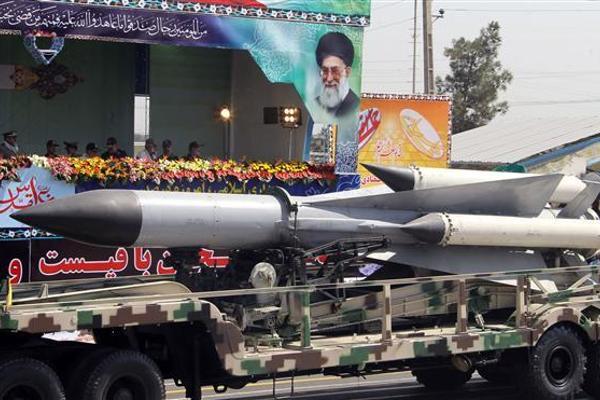Iran showcases army power as Guards warn of US contact
TEHRAN


A military truck carries missile during the an annual military parade which marks Iran's eight-year war with Iraq, 1980-88, in the capital Tehran, on September 22, 2013. AFP photo
Iran paraded 30 missiles with a nominal range of 2,000 kilometers on Sept. 22; the first time it had displayed so many with the theoretical capacity to hit Israeli targets, just as the country’s elite Revolutionary Guards warned of the dangers of dealing with U.S. officials ahead of diplomatic contact.Iran displayed 12 Sejil and 18 Ghadr missiles at the annual parade marking the anniversary of the outbreak of the 1980-88 Iran-Iraq war.
The stated range of both missiles would put not only Israel but also U.S. bases in the Gulf within reach, and even the Turkish capital Ankara.
But in his speech at the parade, President Hassan Rowhani insisted the weaponry on show was for defensive purposes only.
“In the past 200 years, Iran has never attacked another country,” he said. “Today too, the armed forces of the Islamic Republic and its leadership will never launch any aggressive action in the region. But they will always resist aggressors determinedly until victory.”
The Sejil was first tested in November 2008 and the Ghadr in September of the following year. Both are two-stage missiles that use solid fuel that allows them to be moved around and launched rapidly.
Beware of US, says the military elite
Just as the parade made news early on Sept. 22 morning, Iran’s elite Revolutionary Guard warned of the dangers of dealing with U.S. officials, ahead of expected diplomatic contacts, underlining the internal challenges President Hassan Rouhani could face to improve ties with the West.
Rouhani is expected to pursue a charm offensive in the coming week while in New York for the U.N. General Assembly in order to set the right tone for further nuclear talks with world powers which he hopes will bring relief from sanctions, according to diplomats and analysts, Reuters reported.
The new Iranian president said yesterday that Tehran was ready for negotiations with Western powers provided they set no pre-conditions.
Rouhani also said the world needed to accept Iran’s right to enrich uranium.
The Islamic Revolutionary Guard Corps (IRGC) military force was established to safeguard Iran’s revolution in 1979 and has since influenced political, social and economic affairs.
“Historical experiences make it necessary for the diplomatic apparatus of our country to carefully and sceptically monitor the behavour of White House officials so that the righteous demands of our nation are recognised and respected by those who favour interaction,” an IRGC statement said.
It added the IRGC would support initiatives that were in line with national interests and strategies set forth by Iran’s theocratic leader and highest authority, Ayatollah Ali Khamenei.
The 125,000-strong IRGC has a military budget that is said to dwarf that of the regular armed forces. Its top commanders are handpicked by Khamenei but can also be former members who have occupied government positions.
Iran to take control of Russian-built reactor 'Monday'
TEHRAN - Agence France-Presse
"Tomorrow (Monday) the 1,000 megawatt Bushehr nuclear power station will be handed over to Iran," Salehi told the official IRNA news agency on Sunday. "But for another two years it will be under Russian guarantee and a number of Russian experts will remain in place to give advice and technical assistance," he added.
Salehi is to join Russian officials at the plant for an official handover ceremony on Monday.
He said he expected work to start soon on a second nuclear power plant on completion of talks with Moscow.
"Negotiations are continuing and are well-advanced," he said. "Work will start soon," he added, without giving a date.
Construction of the Bushehr plant started in the 1970s with the help of German company Siemens, which quit the project after the 1979 Islamic revolution over concerns about nuclear proliferation.
In 1994, Russia agreed to complete the plant and provide fuel for it for 10 years, with the supply deal committing Iran to returning the spent fuel, amid Western concerns over its controversial uranium enrichment programme.
Work began in 1995 but it was completed only in 2011 after multiple delays, and full capacity was achieved only this year after further hitches.
Gulf Arab states have expressed concern about the plant but Iran and Russia say it is subject to International Atomic Energy Agency safeguards.
